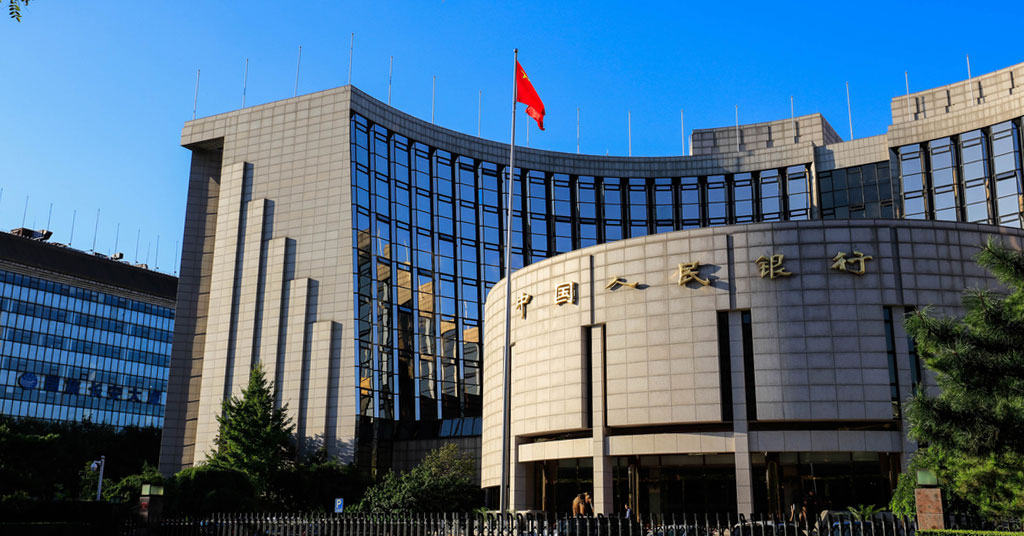Director and Head of APAC at ECOMMPAY reveals her thoughts on current payment solutions and their prospects in Asia

Digitizing the unbanked: Interview with Audrey Ottevanger. Source: Ecommpay
How the APAC region is the most advanced payment market globally, which payment solutions are the most promising, what payment trends are in highest demand and who affects them the most: customers, businesses or governments – these and other questions PaySpace Magazine discussed with Director and Head of APAC at ECOMMPAY (international payment service provider and direct card acquirer) Audrey Ottevanger.
During your speech, you said that the payments market in the APAC region is actively developing (mentioning a huge amount of transactions made during the Singles’ Day). Could one say that APAC’s payment market is leading development compared to Europe and the rest of the world?
Asia has actually lead the way for payment trends for the past 5 years, and this is lead from consumer behaviour which formed preferences. If the smartphone was never so popular in Asia it would have been a different story. But the adoption of smartphones, such as how all Asians are using their smartphones in their daily routine, we’ve been able to solve a lot of issues we couldn’t do before like overcoming financial digitalising roadblocks. So for example, if you look at China – Alipay became so successful because they used the fact that every Chinese consumer has a mobile phone. And they actually helped to solve a pain point, letting everyone pay really easily with a phone even in street stores, which didn’t want to accept any kind of credit cards because of fees and monitoring (that’s why they want cash), even when people don’t have cash.
The other thing about China is that the government pushed this agenda, “Let’s get rid of cash slowly and pay digitally, using mobile phones”, that’s how Alipay and WeChat Pay became such a phenomenon. Honestly, when Alipay started, offering QR Code payments, many people were like, “That’s not going to work”, because in Europe QR Codes were used like 20 years ago, and it didn’t take off. So, why is it now in China QR Codes are something that all people would want to use? It’s because mobile phones paved the way for where we are now. So that’s one payment trend – smartphone usage which leads to a rise in digital wallets Alipay and WeChat Pay.
Also, there are regional digital wallets that solve a pain point, digitalizing the unbanked population who wanted to shop online. For example, in Indonesia, the majority of the population outside the metro cities are unbanked because they don’t even have an ID card, but with e-wallets you’re digitizing an economy, allowing people to put cash on e-wallet or cards.
So the future of payments in Asia is not about making payments by using your eye or a chip in your skin, it’s how do you reach those people who don’t have a bank account and how you digitize them. We’ve been able to do that. So I think Asia is leading in such trends, they’ve been able to solve a big problem by bringing the population online.

One can order a taxi cab directly from Alipay app. Source: alizila.com
What can you tell us about face recognition as a payment method, how promising is this solution?
Facial recognition can be used for so many things, you’re unlocking phones with Face ID, paying with Face ID. Now it’s also being used in airport security. Perhaps soon you won’t even have to go through a manual immigration control anymore with Face ID. I think there’s still a lot of work to be put into it, and maybe in the future Face ID will be the standard which payments will be more secure and convenient for consumers and merchants.
During your speech, you mentioned that payment preferences are dependent on customer age (millennials prefer to pay digitally and with cards and the older generation prefers cash). What can you say about local financial literacy? How would you rate its level in the APAC region?
I’ll give you examples of countries that are growing at a very fast pace but the majority of their population still live below the poverty line like Indonesia, Philippines, even Vietnam to a certain extent. Those who are living in poverty, don’t have any kind of financial education because they are living from day to day. However, having said that, Vietnam, for example, has been able to grow its economy because it was stimulated by millions of working people who have been moving from poverty to the middle class, joining the digital age as well.
So, in the Philippines, if you think about e-commerce transactions, they’re still only a small percentage of retail sales. That’s because the majority of the population in the Philippines are either poor, or they don’t have the knowledge, but what they do have is a phone. So a phone is a thing which made them want to go online because who doesn’t want to have a good deal? And if you try to find out what the reason was for Asians to become more digital – it happened because people were looking for products which they can’t buy in their hometown.
Logistic issues are being resolved, so now people can order online, and for doing it, they forced themselves to learn how to use this technology. That’s why this digitalization has helped many aspects of things, it’s not only about letting people buy services or products online but getting people to come out of their shell and being able to learn something new in order to get a better deal online or because of the convenience offered. Before, they may have needed to spend hours going to a travel agency to buy tickets so they could visit relatives, but now they can go online using the phone. So all of these things helped many people elevate themselves from where they were to lead a better lifestyle.
In your opinion, where will development go further – towards universal smartphones (which work as mPOS-terminals and crypto smartphones, have online banking with Face ID and fingerprint recognition, allow you to withdraw cash without a card) or towards nanotechnology and semi-integrated technology like implementing chips under the skin or using smart contact lenses?
Firstly, when we talk about physical assets, whether it’s a phone or wearables, they have shown up only during the past 5 years. In the next 5 years, it’s still going to be around, perhaps it’ll evolve somehow, offering you more options on your phone which currently aren’t available. However, I really don’t know where it’s going to go because every time you think, “Who’s going to adopt this technology?”, and then the next one comes up.
Crypto and blockchain technology are big ones, in Asia we’re still very conservative about regulating or allowing crypto exchanges to enter the market or accepting crypto as a currency, but governments are looking at how to regulate it. And whilst the trend is there, it is only a small population who has adopted this. Currently, governments are looking into how to regulate crypto, we are also seeing the rise of virtual banks in Asia, shaking up the establishment of traditional banks and now in Singapore and Hong Kong we’re giving licenses to virtual banks which means that the Digital Payments landscape may change drastically. For example, a mobile wallet payment solution GrabPay has applied for this virtual bank license. So imagine that! I have a bank, I have a wallet, I have a user adoption, I will give you a super app which can give you food any time of the day, send groceries, and all kinds of other things that you need, so that’s how they will build their own entire ecosystem. I think that’s what’s going to happen. Whether it’s FinTech players or maybe some technology companies, which are not from the industry who will join the ecosystem and change the look of digitalisation.

Grab mobile app. Source: shutterstock.com
In your opinion, which payment solutions in APAC are implemented better than in other countries? Are there any payment solutions/methods that aren’t utilised in the APAC region as good as the rest of the world? Or don’t work as well as in other countries.
I think it depends on the market, each market in APAC is so different. In Singapore, credit cards have 98% penetration, so it’s like Europe. And the reason why, is because in Singapore we love rewards, so we want to use a credit card in order to get rewards, and everybody uses them – no matter if it’s physical, Apple Pay or Google Pay – behind it the funding source is still a credit card. So have we adopted things like cryptocurrencies or e-wallet? Sure! But because the consumer loves rewards, we haven’t moved from card usage. So it’s one market, one side of it.
I think for other developing markets like Indonesia, the Philippines, and Vietnam where you have such a big difference between income levels of the population, I think that e-wallets will be the ones that will overtake cards. Wallets will be able to unify all different users. If you already have something like 100 million users on your app (for example, for ordering a taxi or other things), then you have 100 million people who are going to use your payments. So when you offer other solutions, they will adopt it. Take a close look at how the rise of wallets is going to change the face of Asia and also keep an eye on 2 economies which are having explosive growth, Vietnam and Indonesia, and maybe that’s going to change the way, besides China, of what’s going to shape how the rest of the world will do payments.
So you think e-wallets will be popular not only in the APAC region but also in the rest of the world as well?
Well, I think what will happen is trends that come – sometimes they either get adopted really quickly and sometimes they don’t. So Alipay and WeChat Pay don’t need adoption from any other market because they’re big enough, but e-wallet is kind of a method that allows you to have various funding sources which mean that it has multiple uses. I think that you will see the rise of Super Apps in Europe and other regions.
Nowadays some large tech companies use their huge client base to release their own financial solutions. Some regulators and representatives of the banking sector believe that such projects threaten the stability of the banking system, and the issuance of alternative currencies by such tech players (for example, Facebook’s Libra) could even lead to a global crisis. What is your opinion on this?
I think the adoption of payment systems will be coming up whether it’s Libra or something else. If there’s a true story behind, solving a pain point, there will be an adoption. Other payment technologies that have come up and have huge adoption it’s because they’re solving a pain point. With Facebook’s Libra, I think it’s still too soon to tell and I can’t say whether it will work or not, I’m just not sure what pain point or use case exists for people to want to use Libra. So if we can’t answer what it is, what are they actually solving – either bringing the population out of poverty or making it a more convenient way to pay – what is it for? There must be a legitimate reason for adoption.
According to Facebook, their currency will give access to financial services for people without a bank account. But you’ve already said that, for instance, unbanked people in Asia, they already have such access, thanks to their smartphones. So seems like it’s not a helpful solution for the Asian market.
That’s what I mean if it’s just another method, then okay, maybe someone will adopt it, and some won’t. The reason why Alipay became so successful is because they immediately used a delivery method to be able to solve a pain point that consumers and merchants needed, and together, it worked.

WeChat mobile app. Source: shutterstock.com
Payment trends in Europe and APAC – how much do they influence each other and how independent are they?
Not really. I think in the case of Europe you’ve got very peculiar behaviours. For example, in Germany, they don’t believe in credit and therefore, they only use debit cards. In the Netherlands, you’ve got iDeal which is popular, so why don’t they just use Visa or Mastercard, why do they have to use iDeal? But perhaps it’s because of the consumers’ behaviour or consumers’ preferences and also maybe they don’t feel it’s secure. All these things are very similar to Asia, like, “I don’t trust the banking structure, that’s why I don’t want to open an account, I won’t do online banking, but I’ve got an e-wallet which is not a bank and so I can give it my cash”. So it’s all about consumer behavior, identifying consumers’ behaviour, knowing what their preferences are. Can consumer behaviour change? Yes, it can. But it’s identifying that, if you look at what’s happened in Europe, where there are populations that have payment systems which exist to specifically serve them – it’s the same thing in Asia as well.
In your opinion, who influences the development of payment technologies now more – businesses or consumers?
It’s both. When PayPal started, it was basically wanting to help small businesses that were selling anything from their home or their garages to accept payments and there was such a need there. So PayPal started on eBay because small businesses needed a way to accept payments. Then PayPal grew, building its own ecosystem. So that’s identifying a consumer’s pain point. It has been proven as well that you can change the consumers’ behaviour because of what an offer is. Alipay and WeChat Pay did that because even though a lot of these small sellers never wanted to go online because they prefer cash, but then realised if they don’t, they will lose business. That’s all because of the network that Alipay and WeChat created. It’s a situation where if you’re a merchant and you don’t accept this payment method you start to think, “I’m going to lose my consumers”. So that’s the other way, you change behaviour, making the consumers and merchants to want to be there. So it’s actually both ways.
Could you name 5 modern payment trends that businesses need to keep an eye on?
I’d say Grab Inc. They bought up Uber’s share in South East Asia, kicked Uber out, and now they are the dominant player. They’ve also applied to become a virtual bank. So it’s going to be very interesting in terms of what’s going to happen, what will they evolve into?
If you look at payments’ trends in China which are predominantly Alipay, WeChat Pay, and Tenpay where the rest are far behind. Alipay and WeChat Pay are amazing companies because they control the ecosystem, and they need to continuously innovate and now they are breaking into international markets. They’re trying to get you and me to pay via Alipay. But why would we want to? So what they’re trying to do is team up with other payment systems in different countries, for example, in Europe. Or if you travel to China you basically can’t pay with your credit card, you can only use cash but a lot of merchants don’t accept cash, so you would need to use a mobile wallet or a local card on any Alipay terminals. So there’s a convergence and integration of different payment systems together.
So Alipay is definitely a company to keep an eye on, to know what they’re doing. They actually want to become the #1 payment method worldwide. Whether or not they can do it – we’ll see. They are capitalizing on Chinese travellers who are traveling everywhere and all merchants want to reach the Chinese buyer.

Chinese tourists. Source: flickr.com
You said that small businesses should look at big companies, but there are lots of examples when big companies are keeping an eye on small ones, buying some startups because of their ground-breaking solutions.
Yes, so one should keep an eye on both [smiles].
Another payment trend in Asia that is pretty interesting is Buy Now, Pay Later or installment plans. A lot of small startups and even big companies started doing it. If you buy something online, the merchant gets the full amount and the customer gets to pay for it in installments. Now that could be for travel, retail, for goods, services – a variety of things.
So you can choose how to pay – with your credit card, e-wallet or other channels instantly or later in installments, or just buy it now and then pay in the next 6 months. So that’s also another trend which has become quite popular. This has been made popular by small companies that have now grown into large businesses.
Experts call China and India the most promising countries in terms of the growth rate of FinTech solutions amongst the population. However, in China, cash is still in the TOP 3 most popular payment methods. In your opinion, how soon will the world, in particular, China, abandon them?
No [laughs]. I think there always will be cash in some shape or form. I don’t think that e-commerce will be 100% the way of how people buy things. Currently, I think global online sales are about 20%, so that will grow and maybe it’ll reach 50%. But because it’ll never be 100% of people only buying online, there always will be offline, and I don’t think that we will ever get rid of cash entirely.

Indian mobile service revenues are forecasted to double by 2024. Source: unsplash.com
Do you think the world will ever give up using plastic cards and if so, when? You said that using physical cards is still a big thing in APAC.
Let me go back. When I said you will never get rid of cash I meant, in the near future, it will take a while, like another +/- 50 years. Plastic cards will evolve, I think, you don’t need a plastic card anymore because of your phone. I think in the end you might not have cards anymore, there will be just virtual cards and you will use them through your phone or your wearables. So I think plastic cards will become extinct at some point.
According to recent research, payments revenue will reach $1 trillion around 2020 in APAC – up from $0.7 trillion in 2016, and the market will be double the size of anywhere else on the globe. In your opinion, how realistic are these forecasts?
Absolutely [realistic]. I mentioned Singles’ Day – $38 billion in 17 hours – can you imagine that? That’s how big online sales have become. And that’s just China alone. Then there are also growing economies with massive populations like Indonesia, the Philippines.
You’ve got all these people who’ve never had a chance to be online but slowly they are. So I don’t think that this number is unrealistic. I think APAC will hit that in the end. I’m not a specialist in India, but it’s also highly concentrated on smartphones. There is still a large population living in poverty, but there is a huge emerging middle class. Also, they have a growing economy.
Some experts believe that cryptocurrencies are payment solutions of the future. And that in 5-10 years, such currencies will already be widely used to make payments. What’s your opinion on such forecasts?
I think there always will be a percentage of a population that will adopt it. Today, bitcoin is accepted on e-commerce sites, so you’re able to pay for goods and services, using bitcoin. So we already have it now.
About a couple of years ago, the merchants would accept crypto as a payment method because it was an in-thing, then it died down a bit, and now it’s coming back again. I think we will see the rise of a certain percentage of a population, actually using it. But I don’t think there will ever be a mass adoption with people saying, “I only want to use crypto and nothing else”.
It’s known that the People’s Bank of China is about to release its own cryptocurrency and it forced the main tech companies like Alibaba to accept it and spread among their clients.
I think that what we’re going to see is governments regulating it. The only way they’re going to allow crypto is if they regulate it which is the opposite of what crypto and blockchain stand for. And it depends on how the regulations are going to be as well, if the regulation is going to be very open, then, yes, I think we’re going to see a lot more adoption. But I don’t think there will be mass adoption, remember, we still have very developed and undeveloped countries, and the undeveloped ones are going to develop a little bit more. But who knows maybe they will adopt crypto quicker than the developed countries.

People’s Bank of China. Source: shutterstock.com
Previously, you stressed on a high level of Singapore’s market development. What do you think about the future of cryptocurrencies here?
From what I’ve read, the government is already speaking with the crypto players to understand how to regulate them. What kind of licenses are needed and how the government is actually going to monitor, control, and regulate this field.
I’m pretty sure that Singapore will be probably one of the first governments which will allow crypto as a form of currency. I think that then we’ll see it in APAC but then we’ll still see, especially in Singapore, where customers love the fact that their credit cards give them rewards will motivate them to not give up on their credit cards. What will crypto give me? Okay, maybe it’s more secure and cheaper, etc. Can cryptocurrencies give me benefits? So I think it all depends on that as well.
Regarding everything you said before, who, in your opinion, influences payment trends the most: customers, businesses or governments?
It depends. I think it’ll be businesses and governments – because you have to lobby the government for any new technology. However, China and Singapore can be different. Regardless of government differences, the idea comes from somewhere. Governments don’t suddenly come up with an idea themselves. So it will be businesses, lobbying their ideas to the government, and then the government will push these ideas to the consumer.
READ ALSO:










